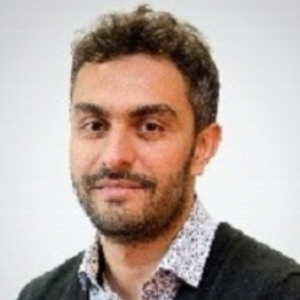Title : Designing photocatalyst nanostructure for enhanced photon-to-conversion efficiency and hydrogen production
Abstract:
As well as direct energy conversion in solar cells, sunlight can be used as the energy source for water depollution or hydrogen production. These two are inexorably linked as both use photocatalysis as their energy conversion mechanism. Photocatalytic depollution of water has attracted great attention and many studies have been published in the last decade; however, improving photocatalytic efficiency, as well as making the process industrially viable remains challenges. Additionally, the conversion of water to hydrogen fuel using photocatalysis is one of the most promising strategies for industrial-scale production.
Titanium dioxide is by far the most popular photocatalyst; it is cheap, inert and reasonably active. However, TiO2 has a large with its band gap (3.2 eV for anatase and 3.0 eV for rutile) can only be excited by UV light, which lower the solar energy conversion efficiency and limit its use in the visible range (small absorbance factor). Therefore, engineering the architecture of the plasmonic photocatalyst in core-shell or 3D photonic crystals leads to the enhancement of light harvesting properties and improved photon-to-energy conversion for hydrogen production. In core-shell nanostructure, the photocatalyst behave as a photonic “NanoLens” mimicking the focusing of light observed for the lens-like epidermal cells. Thus, the core–shell nanostructure acts as a convex nanolens to reinforce the electromagnetic field at the nanostructure surface. Designed in photonic film with chiral nematic structure the mesoporous structure with a 3D architecture, titanium dioxide showed improved efficiency of the conversion of light to energy.
The material was characterized by means of different techniques, such as BET, WAXS, polarized optical microscopy, UV-Visible spectroscopy, TEM and Time Resolved Microwave Conductivity (TRMC). TRMC results show an improvement of the charge carrier density produced under illumination at the photocatalyst surface. This strategy enables to ovoid the use of higher amount of Nobel metal to reach higher efficiency of photocatalytic production of hydrogen.



